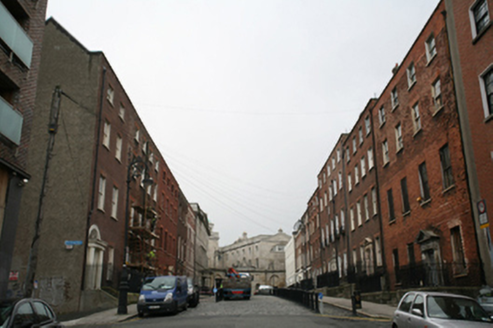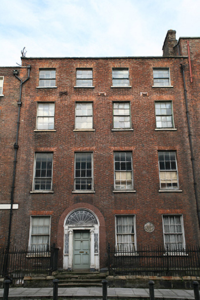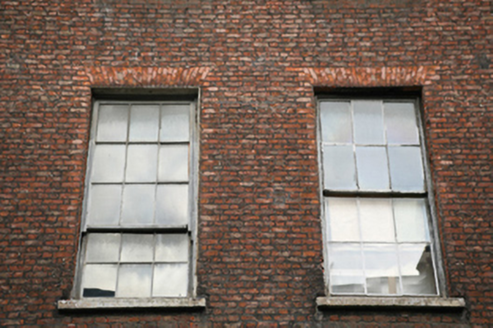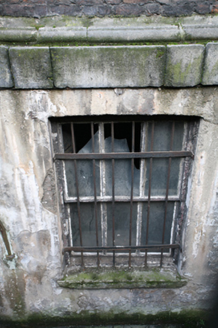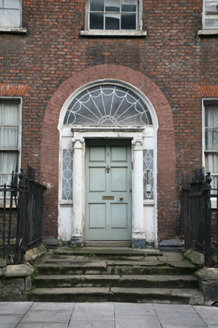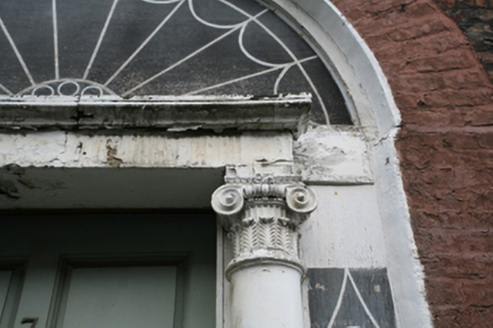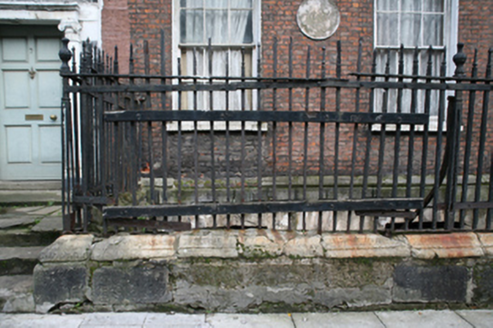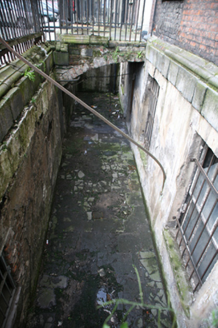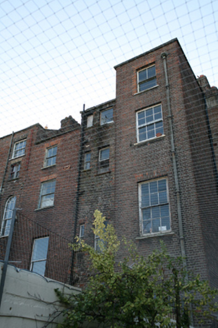Survey Data
Reg No
50010685
Rating
Regional
Categories of Special Interest
Architectural, Artistic, Technical
Original Use
House
In Use As
Apartment/flat (converted)
Date
1735 - 1745
Coordinates
315222, 234983
Date Recorded
08/12/2011
Date Updated
--/--/--
Description
Terraced four-bay four-storey house over raised basement, built 1739-43. Now in mixed use. Pitched slate roof to front with hipped section to east and further pitched section running perpendicular to street and hipped to rear incorporating full-height rear projection. Roof hidden behind parapet wall with granite coping and cast-iron hopper and downpipe breaking through to east end with further rainwater goods to west feeding into neighbouring downpipe. Stepped brown brick chimneystacks to both party walls. Red brick walls laid in Flemish bond with iron tie-plates, set on moulded granite plinth course over lime-rendered basement walls. Gauged red brick flat-arch window openings with timber lined reveals, masonry sills and replacement six-over-six pane timber sliding sash windows, with nine-over-six pane frames to western two bays, and possibly earlier three-over-three pane sashes to basement with wide glazing bars and partly exposed sash boxes. Gauged brick round-headed door opening with tripartite painted stone Ionic doorcase. Replacement timber door flanked by engaged Ionic columns on plinth blocks supporting fluted lintel cornice with sidelights and fanlight, boarded up. Door opens onto sandstone-paved platform and three sandstone steps bridging basement. Platform and basement enclosed by wrought-iron railings with cast-iron corner posts and finials, all set on moulded granite plinth wall. Rear plot enclosed by single-storey building opening onto Henrietta Lane.
Appraisal
This house was built for Nathaniel Clements, who developed much of the street, this house being a mirror of No. 3. The interior retains an original double-height open-well staircase and early dog-leg closed-string service stair with original plasterwork and joinery throughout. Despite the external appearance, the interior contains some important elements and forms an important part of this early Georgian streetscape. Laid out by Luke Gardiner in the 1720s, Henrietta Street is a short cul-de-sac containing the finest early Georgian houses in the city, and was named after Henrietta Crofts, the third wife of Charles Paulet, 2nd Duke of Bolton and Lord Lieutenant in 1717-1721. The street developed in a piecemeal fashion and set the trends of scale and design in domestic architecture.
